Compost
How It's Made
At the Miramar Greenery, compost is made from yard trimmings and food scraps that have been ground, placed in windrows, turned and watered for 70 days. During this time, microorganisms digest the carbon and nitrogen rich mixture, causing the windrow to sustain temperatures of 140-165 F. This process eliminates most weed seeds and pathogens while breaking down the organic material into beneficial soil nutrients. Finished compost is screened to a particle size of one-half inch or less which also removes film plastic from the final product.
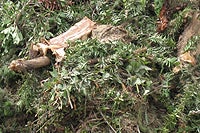
Yard Trimmings
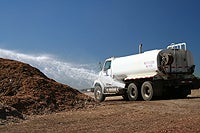
Recycled Water
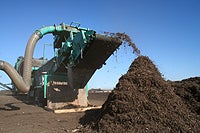
Final Product
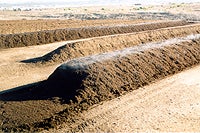
Windrows
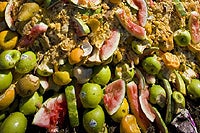
Food Scraps
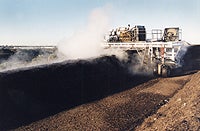
Windrow Turner
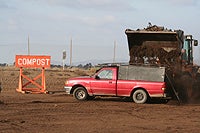
Loading of Customer's Truck
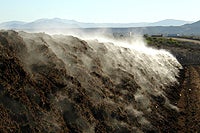
Heats to 140-165F
Practical Application and Benefits
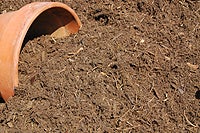
Compost can be used as an amendment to improve soil texture and increase nutrient and water holding capacity. In San Diego, where soil lacks many essential plant nutrients, mixing compost in with the soil is one of the best things you can do for your yard and garden.
Here are three different ways to incorporate compost:
- Amend garden soil by adding 1-2 inches of compost 4-6 inches deep into the soil. Irrigate area twice thoroughly before planting.
- Top-dress planters with compost to help retain moisture and protect root systems. Spread three inches of compost around the base of plants and shrubs, keeping it from touching plant stems or trunks.
- Use compost as potting mix for growing containerized plants and seedlings. Mix two parts compost, one part coarse sand, one part vermiculite, and one part peat moss.
Publications:
Compost use for reducing water pollution (PDF)
Compost use for planting bed establishment (PDF)
Compost use for storm water management (PDF)
Compost product claims as soil amendment (PDF)
REMINDER: Planting directly into compost alone is not recommended

